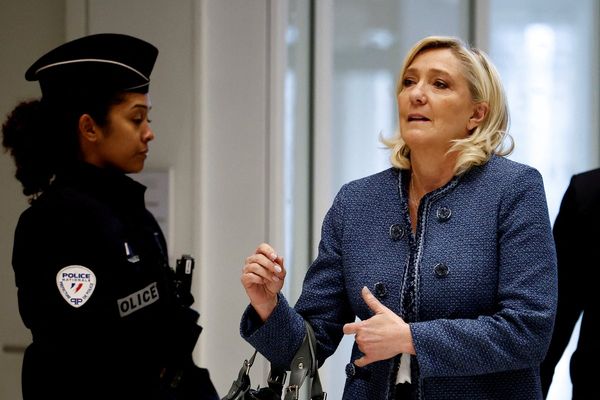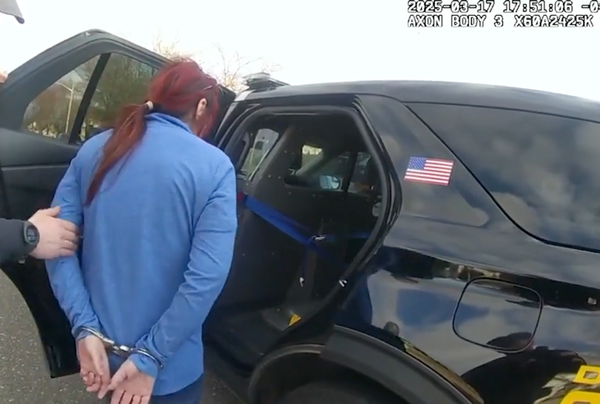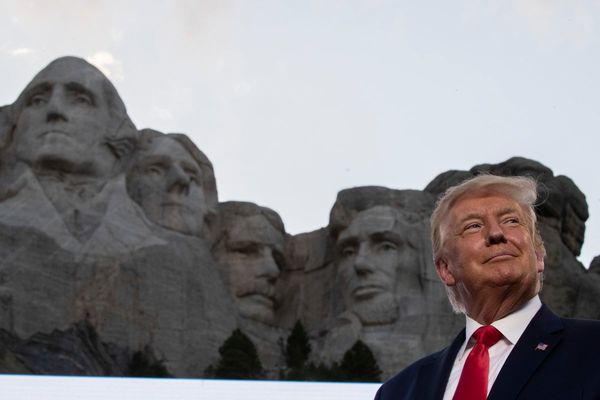
Kate Winslet insisted that her new film, in which she plays the fearless photojournalist Lee Miller, must have a female director.
The Oscar-winning actor, who is the lead star and co-producer of Lee, released in cinemas this week, wanted to portray American Miller as “a truth-seeker and a truth-teller”. She felt that Miller brought a particular sensitivity when she reported on the battle of Saint-Malo in the second world war, field hospitals in Normandy and the Dachau and Buchenwald concentration camps.
Winslet said “there was no question that it would be a woman who would direct this film”, according to production notes.
Miller, who died in 1977, is remembered as a model for Vogue and the muse and lover of surrealist artist Man Ray in her earlier life. But, during the second world war, she became a pioneering war correspondent and photographer, defying expectations of the time to report from the frontline. She once said: “I’d rather take a picture than be one.”
In focusing on that particular decade of Miller’s life, Winslet has said she hopes to dispel “preconceived ideas about Lee Miller as the model and the subject of many male artists’ gaze”.
Winslet offered the opportunity to direct the film to Ellen Kuras, who had worked as cinematographer on the films Eternal Sunshine of the Spotless Mind and A Little Chaos alongside Winslet. Lee is Kuras’s feature debut. She also co-directed The Betrayal (Nerakhoon), a 2008 documentary about refugees, which won an Emmy award.
Although Winslet has been nominated for an Oscar five times and won in 2009 for The Reader, it took her more than eight years to get the film about Miller made.
Kuras told the Observer that potential investors had been “patronising” in their dismissal of Lee as “a woman’s story”, asking: “Why would you want to make a story about her?”
She said that previous attempts to make a film about Miller had tended to be more from a male perspective, showing her as a “damaged woman” rather than understanding the toll that the war took on her.
“She was not unlike a lot of people who returned from the war, who had PTSD, and couldn’t talk about what happened,” she added.
Kuras also hopes the film will “skew the perspective to a place where Lee’s known for her work and for who she was – not only for the men that she was attached to”. She added: “The tendency is [to] see women through men. [We’re] looking at her as someone who stepped from the front of the camera and went behind the camera … to take control of the image … create her own story.
“Lee is a great role model because she wasn’t given the opportunity to become a war correspondent. She went out and found it. She followed her own intuition in the pursuit of telling the truth and the pursuit of justice.”
Her film, she said, portrays “a woman who threw herself into the heart of darkness”.
Winslet said last month she had refused to hide her “belly rolls” in the film during a scene in which she is wearing a bikini. The film will also recreate Miller’s famous self-portrait in Hitler’s bath at his apartment in Munich, with her boots darkening the bathmat with the mud of Dachau.
Kuras said that, because Miller had felt “objectified” as a model, as a director she was all the more concerned to ensure that scenes did not become “sexualised or objectified”.
The film is based on The Lives of Lee Miller, a book by Antony Penrose, her only child from her marriage to the surrealist artist Roland Penrose.
Kuras paid tribute to Antony Penrose for giving them access to Miller’s personal archive: “Normally you only see selected photographs. To be able to see her contact sheets enabled me to get into her mind and to see how she was seeing the world as she went from place to place …
“Antony Penrose was an incredible partner in the making of the film. Kate spent a lot of time down in Farley Farm [in Sussex], where Lee lived after the war.”
Winslet has said: “Being able to look through all her photography was vital, but more than anything, it was reading Lee’s letters … that helped me the most.”
When she initially contacted Penrose, he told her that “many people have tried to make films about Lee, we have a whole box of screenplays in the attic that have never been made.” When she asked him why, he replied, “they just didn’t quite get her”.







